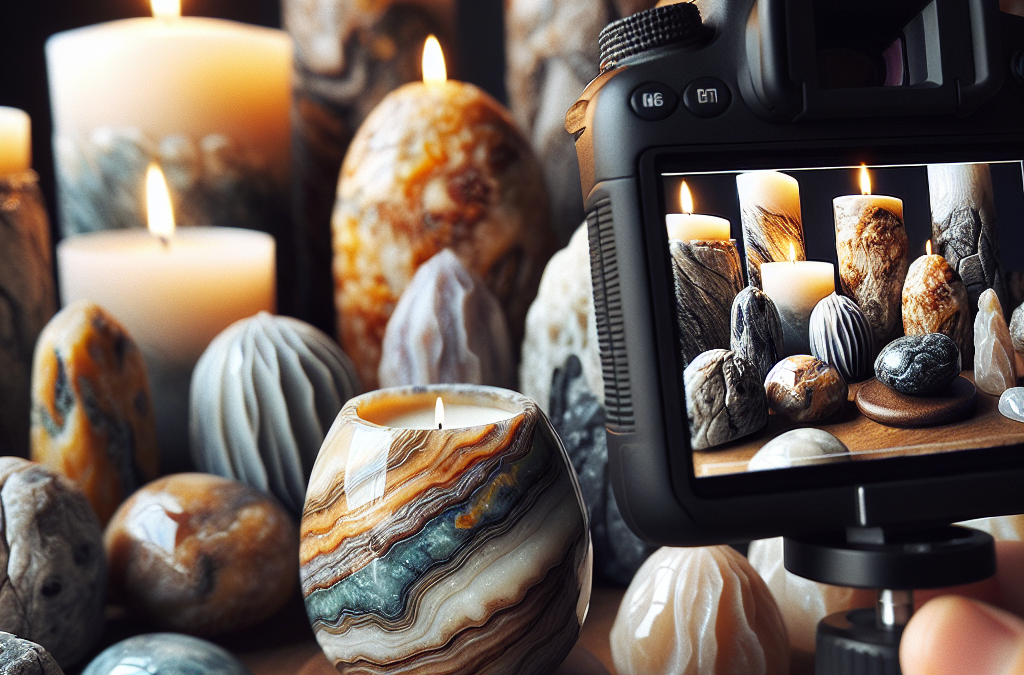Understanding the Materials
Resin: The Heart of the Craft
When I first got into candle-making, the choice of materials blew my mind. Resin, particularly epoxy resin, is a game changer. It’s durable, versatile, and lets you embed all sorts of fun things inside, like glitter or dried flowers. Not to mention, the way it catches the light just makes everything look magical.
You want to make sure you’re using high-quality resin for your candles. There’s a difference between craft-like resin and the professional-grade stuff. The latter not only offers better clarity but also reduces the chances of bubbles forming, which can ruin an otherwise perfect piece.
Looking for Hand-Crafted and Unique Candle Designs?
In my experience, the more intricate your design, the more care you should put into selecting your resin. I’ve had my fair share of mishaps, and trust me, learning about materials will save you a ton of frustration down the road!
Choosing the Right Molds
Finding the right mold for your candles is crucial. Trust me, I’ve gone through a mountain of molds trying to find the perfect match for my resin stone candles. Silicone molds tend to be the best since they bend easily, making it simpler to pop out your creations without breaking them.
Don’t forget about the size and shape! Depending on your vision for the finished product, you might want tall, thin candles or short, chunky ones. Always visualize how you want the finished piece to look before investing in molds.
And hey, don’t shy away from experimenting! I’ve used everything from baking pans to specialized molds just to see how different shapes turned out. It’s all part of the fun!
Enhancing Your Candle’s Aesthetic
This part is where your creativity really shines! Utilizing different colors and textures within your resin can greatly enhance the appearance of your candles. I usually like to layer colors to get a marbled effect – it always throws people off when they find out it’s not just one consistent color.
I also like adding textures, like crushed shells or sand, to give the candles a unique touch. Just make sure whatever you incorporate is heat-resistant and safe for burning. You wouldn’t want to light your creation only for it to accidentally release something toxic!
At the end of the day, your goal is to create a candle that not only smells great but is also a beauty to behold. So don’t hold back, let your artistic side roam free!
Crafting the Candle
Preparing the Resin
Alright, time to dive into the actual crafting! Start by carefully measuring out your resin and hardener according to the manufacturer’s instructions. Getting this step right is key because it affects how the resin cures over time.
Once mixed, I like to let it sit for a few minutes. This helps to release any bubbles that may have formed during stirring. It’s such a little trick, but it makes a massive difference in the final quality of your candle.
While you’re waiting, prepare your workspace! Make sure everything is covered and protected because trust me, resin can get messy. You don’t want to be scrubbing resin off your table later!
Pouring and Shaping
With everything prepared, it’s time to pour! I generally pour slowly to minimize the chance of air bubbles. Depending on the complexity of your design, you might want to pour in layers. It’s almost like building a cake but for candles.
If you’re embedding objects, drop them into the resin while it’s still reasonably fluid. This part always feels like magic to me; watching the pieces come together is just so satisfying!
Allow your candle to cure as per the instructions—don’t rush this part! You’ll want to give it the full time to harden and become strong enough to handle the next steps.
Final Touches and Curing
So you’ve poured your resin and it’s looking fabulous, but hold your horses! Before you consider your candle fully ready, take a moment to check for any imperfections. Small bubbles or rough edges can often be fixed by sanding once fully cured.
After sanding, you can add a finish if you’d like to enhance its shine. I often clear coat my candles for that extra glossy kick. It just elevates the overall look, and who doesn’t love that?
Finally, once everything’s set and done, it’s time to admire your hard work! I love lighting my candles after a long day, and it brings a sense of accomplishment each time.
FAQ
1. What type of resin is best for candle making?
For candle making, clear epoxy resin is generally considered the best due to its strength and clarity. It also has excellent adhesion, reducing the risk of cracks.
2. Can I add scents to my resin candles?
Yes! But be cautious. Use fragrance oils specifically designed for resin, and always follow the recommended usage rates to avoid compromising the integrity of the candle.
3. How do I clean up resin spills?
Cleaning up resin can be tricky. If it’s still wet, you can use paper towels to absorb it. However, if it’s cured, you might need to carefully scrape it off or use a heat gun to soften it.
4. How long do resin candles last?
When properly made with quality materials, resin candles can last for several months, even years, if stored right. However, their longevity also depends on how often they are burned.
5. Are resin candles safe to burn?
Yes, provided you use heat-safe materials and follow proper methods. Always ensure your wick is trimmed and your candle is burned on a stable surface. Safety first!


